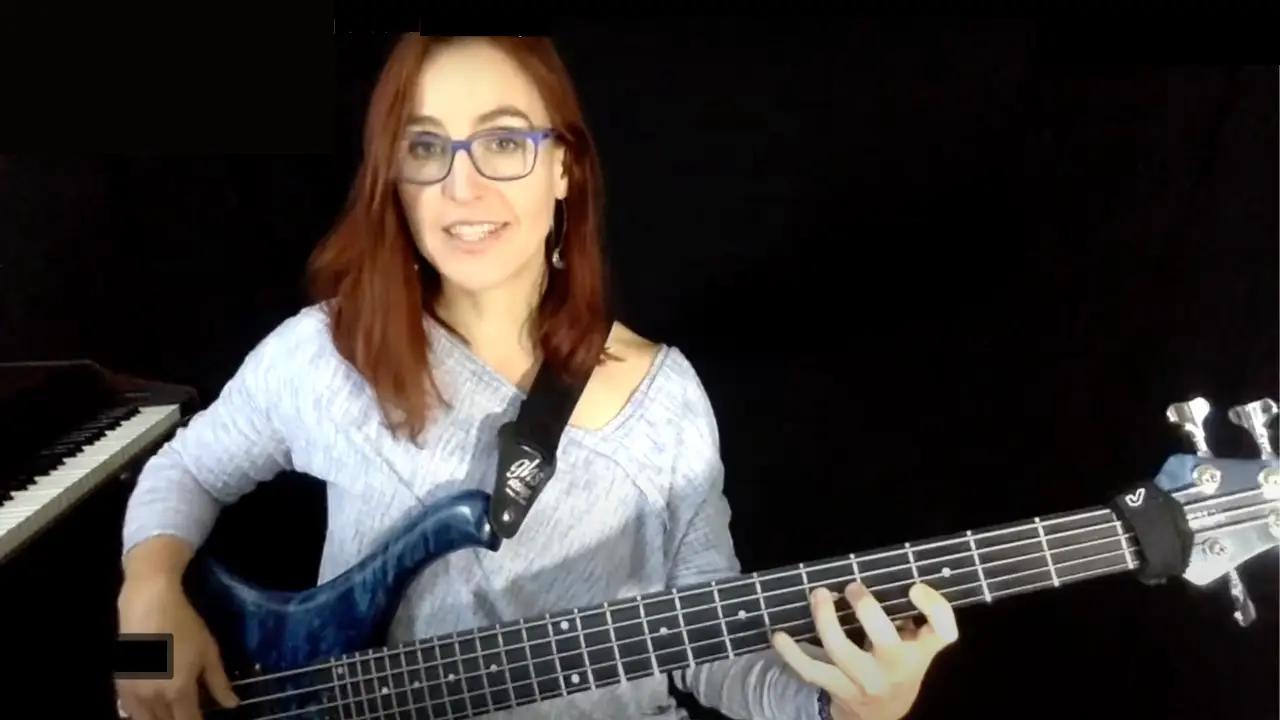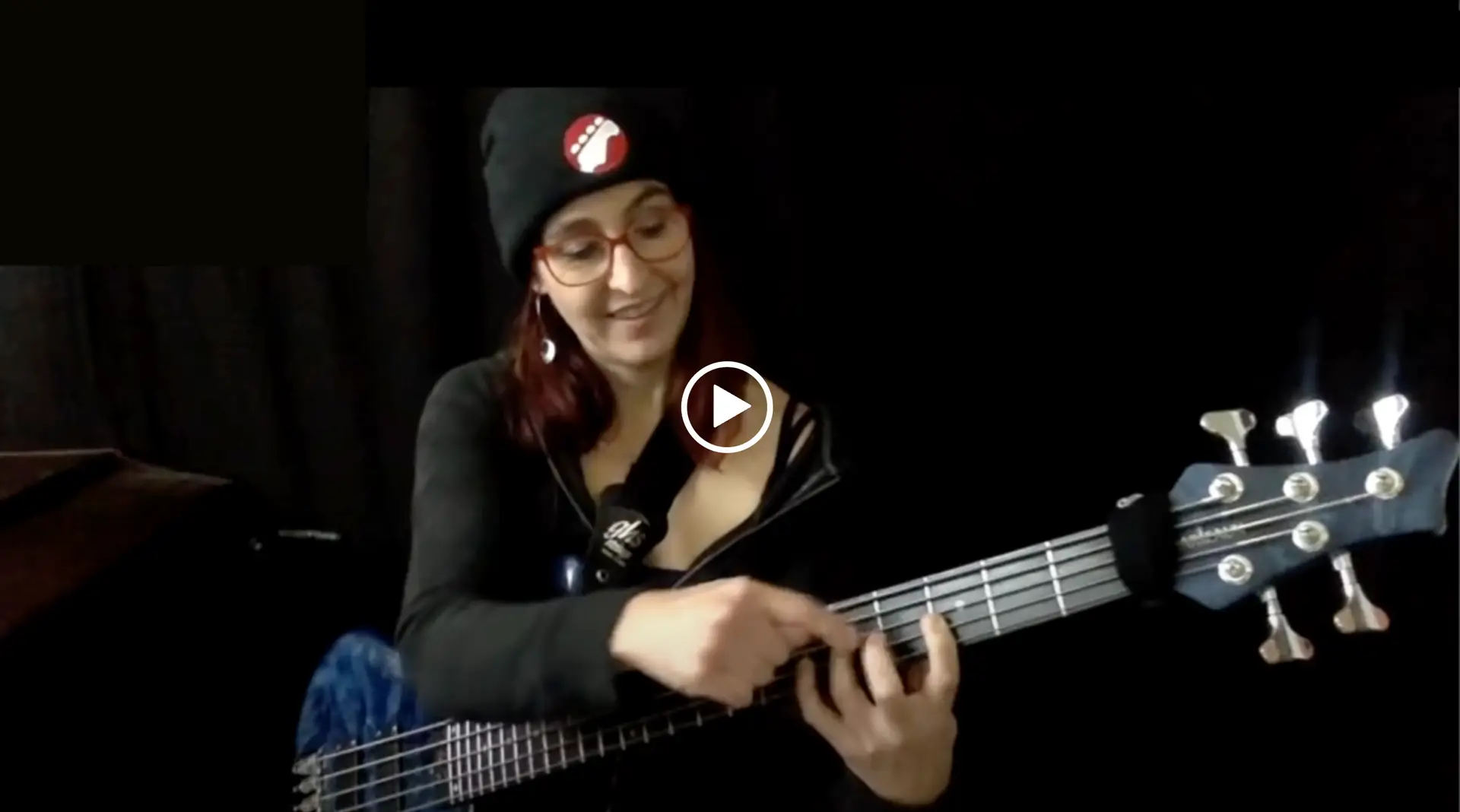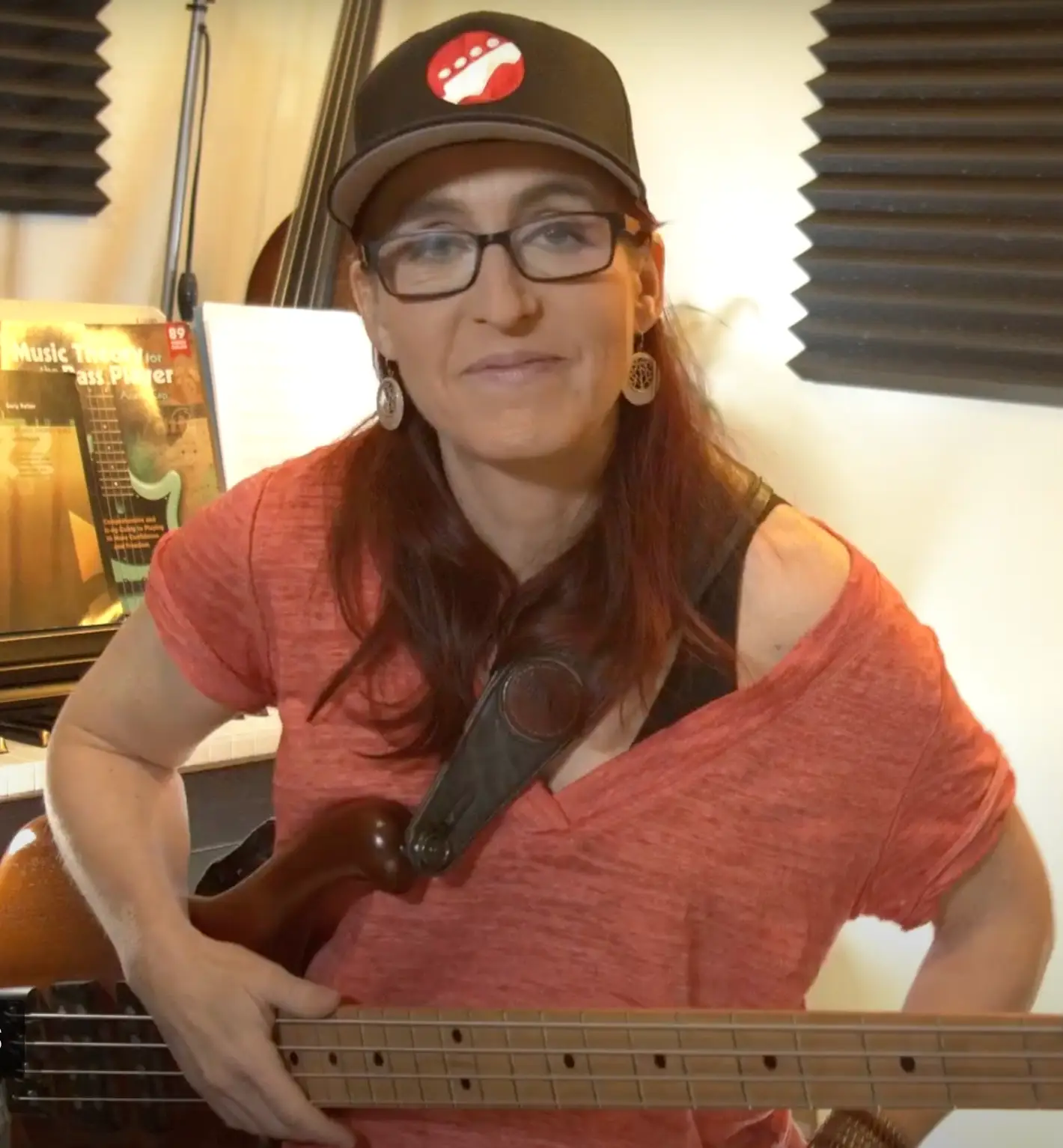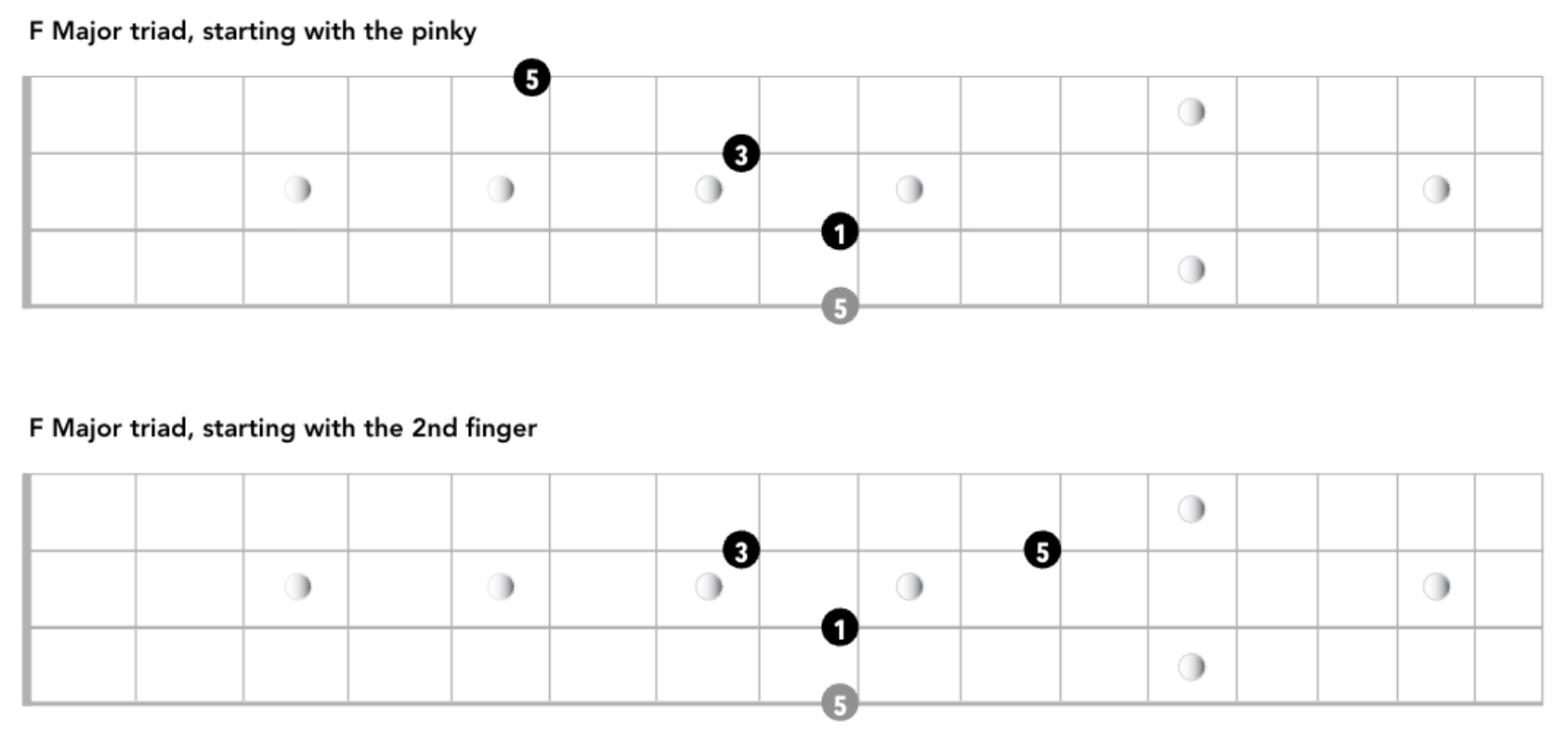Practicing without the Bass: Musical Alphabet Soup

Knowing the musical alphabet up, down, sideways and backwards serves us very well, yet we usually never practice it. Check out this exercise that will make you doubt you ever even knew those seven letters! In the abstract, these can be quite a challenge.
Once you connect the notes either to a picture of the piano or the bass fretboard, they become easier, so: practicing without the bass informs the fretboard, and the other way round, knowing the fretboard helps us understand notes and their relationships to each other. Because, at the end of it, this is where all of this is going!
Check it out and comment below how you are getting on!
If you’d like to study with me, click here.
Transcript:
Welcome to Bass Bit #2. Today, we’re going to talk about the musical alphabet and I will scramble it up for you. Why is that helpful? It is helpful because we need to know the relationship between these notes – up, down, sideways, skipping stuff, coming at it from all sides. This is something that you can actually practice away from the bass, and it’s very powerful. So I’m pulling up my book here, because I want to look up what page number that is on and it’s page number 6. Its Exercise 1 through 8 – we were doing exercises 9 through 16 in Bass Bit #1 already. So here comes Exercise 1 through 8. We’re going to scramble up the musical alphabet. Again, we’re going to set a metronome and we’re going to say the note names going up, just the letter names.
A – B – C – D. That’s really easy right? F – G – A – B – C – D…
So far, so good. Let’s reverse this: C – B – A – G – F – E – D – C – B – A – G – F…
That’s still easy. How about we skip one: A – C – E – G – B – D – F – A – C – E – G – B – D – F…
Let’s go backwards with that: C – A – F – D – B – G – E – C – A – F – D – B – G – E…
I just want to reiterate very briefly what I said last time about the metronome because these exercises are really vital to do with a click; if you don’t, then you’ll cheat yourself out of having to think ahead what comes next, number one. And because you might slow down, and you’re actually practicing bad timing and creating the illusion that in music, if you don’t know something right away, you can take half a second to think about it; well, you can’t!!
In a playing situation, the band will be down the road and you’re still looking for that note. So, it’s really useful to practice this material with a metronome, maybe the first time when you’re figuring it out, you want to really take your time, but then shed it. This is not something you just want to understand. You want to really practice it.
A great way to practice these kind of exercises, for example, is when you are walking somewhere. I used to have a bit of a commute to my bus station – I’m from Europe so you take buses and such; I would walk up the hill and I would go into all sorts of variations, skip two, skip three, go up, go down. It really paid off. Before I knew it, I was at home and I had already done some practice.
What we were just practicing was the conceptual skill. There are several components to playing the bass or any instrument really:
1) the kinesthetic component – where I’m feeling shapes, knowing distances, feeling the sequence of notes under my fingers;
2) an auditory component because it’s music, so we’re hearing it;
3) and there is a visual component – you might be seeing the score in your minds, or you might see the fret board, or you might see the piano keys.
So, when I do these exercises with just saying letter names, they’re not disconnected from me. I see the piano keys, or I can also see the bass fret board as I’m doing that! I also find it very useful to be aware of that because you practice conceptual skills differently than you practice kinesthetic skills for example. Kinesthetic is hands-on – although you can also visualize the movement – that has been shown in research; just visualizing the motion is actually very powerful as well (we know that from Sports psychology).
Let’s do a few more. How about we skip two? So I’m going to start on A, I’m skipping two. So here’s my click…
(clicking continues while saying letters) A – D – G – C – F – B – E – A – D – G – C – F – B – E…
So, interestingly, what I was just talking about is called the diatonic cycle in C major. That’s something we’ll get to. But have a think about it, that’s actually [playing: 4.45 to 4.52] all fourths. Augmented fourth is still a fourth. So we’ll get to all of that.
Alright, let’s reverse that. We’ll start on A, we’re going down two:
(clicking continues while saying letters) A – E – B – F – C – G – D – A – E – B. Okay?
Some of these exercises may seem strange, they may seem disconnected, but when we’re talking about scales, when we’re talking about triads – you’re going to run into questions such as: what’s to the left and the right of a G? for example. And then you don’t want to just know it up, you also want to know it down. You want to know what happens when you skip one, and you want to get faster in knowing how to connect these letter names.
Alright, these are the Bass Bits. This is number 2. I’ll see you at number 3 and arisbassblog.com – please leave me a comment, send me your questions. We are following along concepts in the book “Music Theory for the Bass Player”. Links and also how to study with me in depth are below.
I’ll see you next time. Thank you.
I use Marleaux Basses and Dean Markley Strings. Fretwraps by Gruvgear, pedals, amps, cabs by TC Electronics. (Official endorser of all these fine companies).
Thanks to Wolftrackaudio.com for audio post production.









12 Replies to “Bass Bit 2: Musical Alphabet Soup (BB#2)”
My book arrives tomorrow! I found your site thru Scott’s Bass Lessons. I like your style and am enjoying the blog. Thanks!!
Cool! Thank you for checking in
Wow, another SBL fan!! The pairing of two fantastic talents, Ari and Scott, has me very excited. Ari, I found your Pentatonics course through TrueFire, then saw that you are doing stuff for SBL. Can’t wait for your next seminar!
Thank you Chris. SBL is a totally awesome place, big fan myself. See you all Thursday 🙂
Hi Ariane, The bass bits are working out great so far. I would strongly recommend to anyone following along to get the book. The blogs & book work hand in hand perfectly. I store each blog on my IPad notebook section to reference back to a later date. Thanks.
Very cool, Vinny. Hope it was all worth the wait 🙂 Let me know your mileage
Great little tidbit. I will have to work on that one….. Thanks
Very welcome. Let me know what results you are getting. Btw you can also play the notes as you say em as a variation.
Hi, Ariane . Could we wait for digital copy of your book: DVD or download? Regards Antonio Lobo
Hi Antonio,
At the moment a DVD or digital version is not planned. The videos on this blog and the physical book are the best start. An app and other materials are in the works with different content building on the book. Happy practicing!
Saw your video on No treble.
And purchased your book. I’m an old Dog trying to learn a new trick. I’ve always wanted to learn to play bass. Back in 2011, I bought my self I new bass to me Motivated to play. At the time I was 46. Then I had a bad accident at work. Had some nurse damage to my left arm. I have recovered from my injuries but my left hand is not the same. Range of motion is limited. BUT that’s not going to stop me. I start practicing again . Got my self a bass teacher. Which was the best thing I ever did, because trying to learn on your own is a little frustrating. With out teacher I was just going around learn riffs, not not getting any were. With a teacher he was able to see that my Rythem was off,timing off, and other things. I’m enjoying playing my bass, because I can see progress now, but have long way to go. I realized learning this instrument takes time and practice to get results. The teacher had me write down goals. Some if my goals were to learn to read music, learn notes on fretboard, and one day be able to play with drummer then with band. I was running before, now I know I need to crawl before I can walk then I can run with this bass. That still in the future.
Back to you book I saw your video on finger exercises, just by watching and see your techniques. I noticed my right hand some times I would use James Jamerson one finger hook instead of alternating my fingers.
Your book is Great. Going to be using to my music Theory up to speed. Can’t wait on your next Book. Like your Videos too.
Thank you so much for making this Book.
OLD DOG , LEARNING NEW TRICK. : ) ?
Big Al, you know, with a lot of my older beginner students I have observed that their perspective, motivation and self knowledge will get them far fast. Especially the insight to slow down to learn will get you to your goals faster in the end. All I can say si go for it!! Welcome aboard!